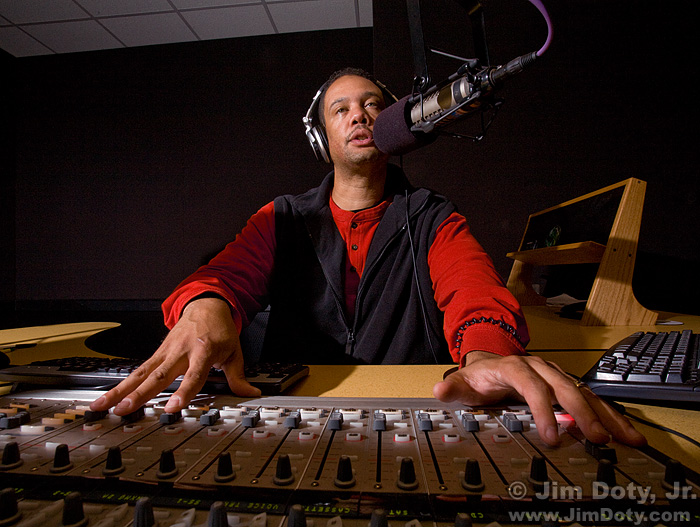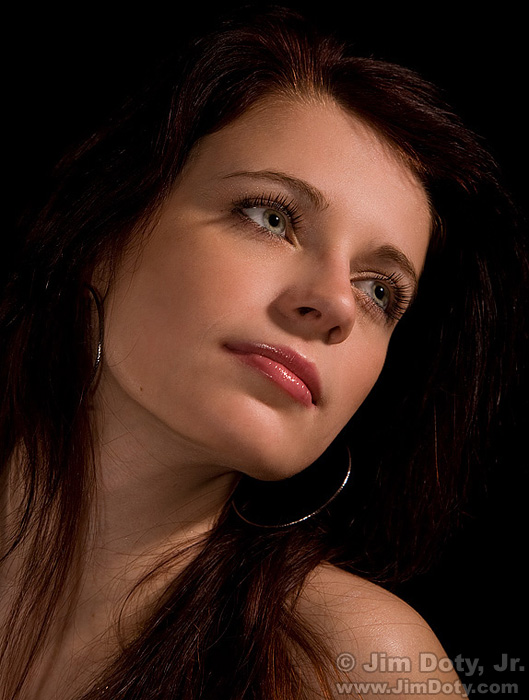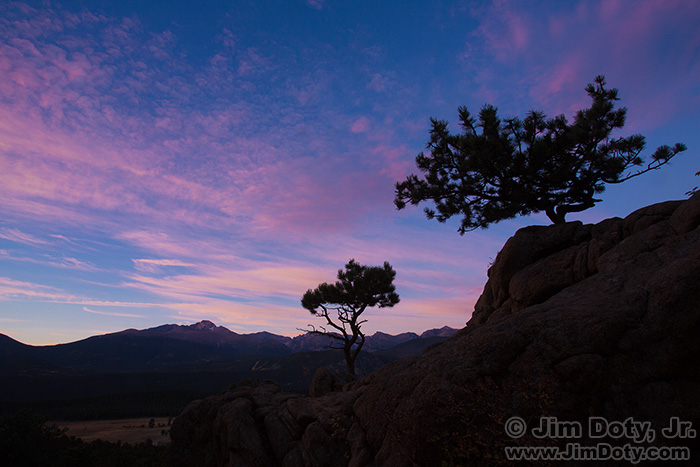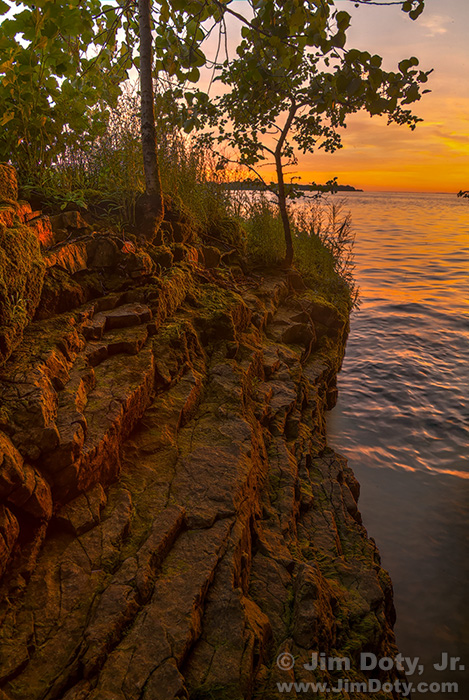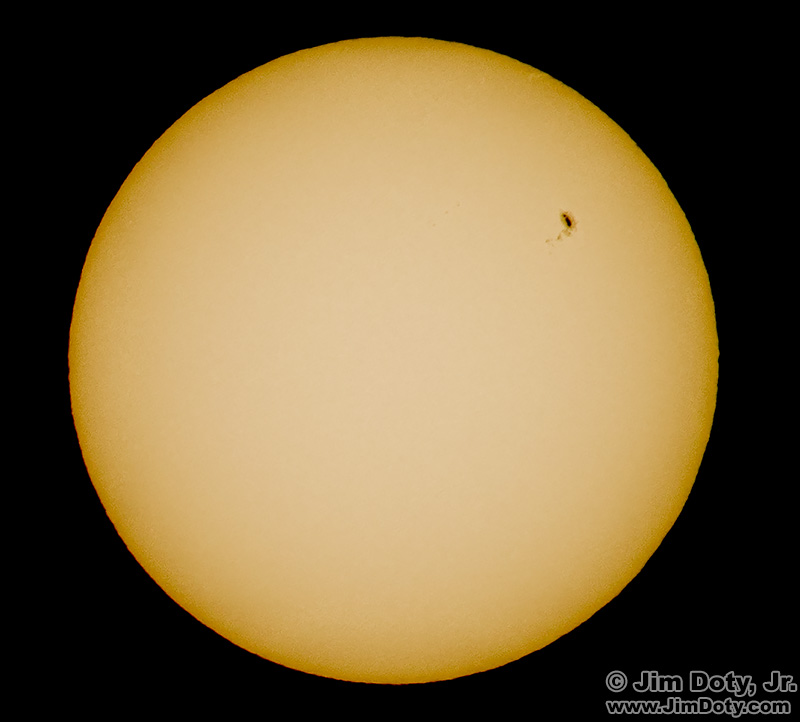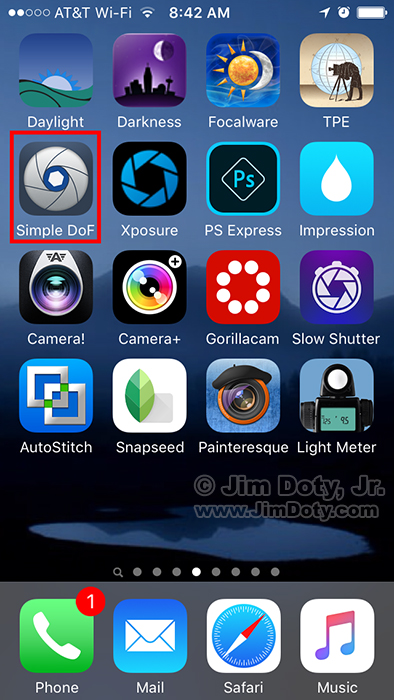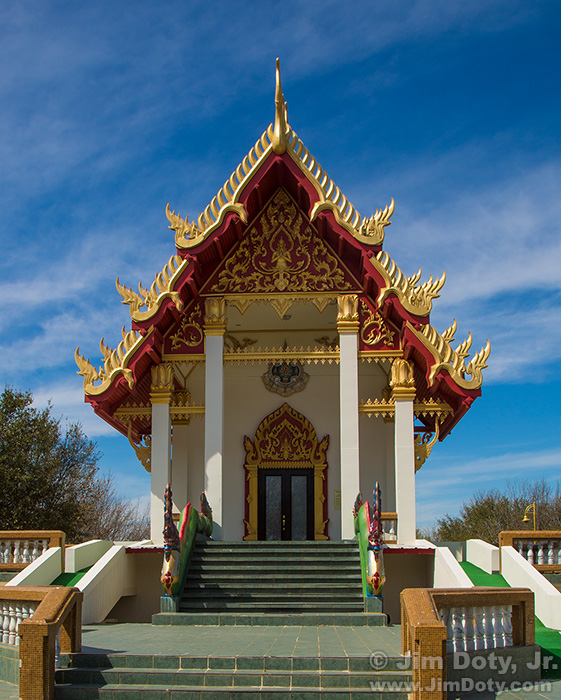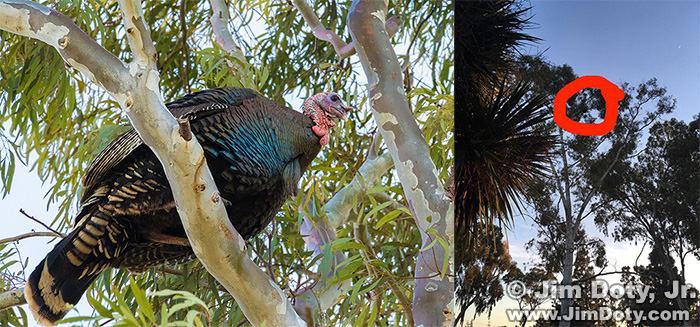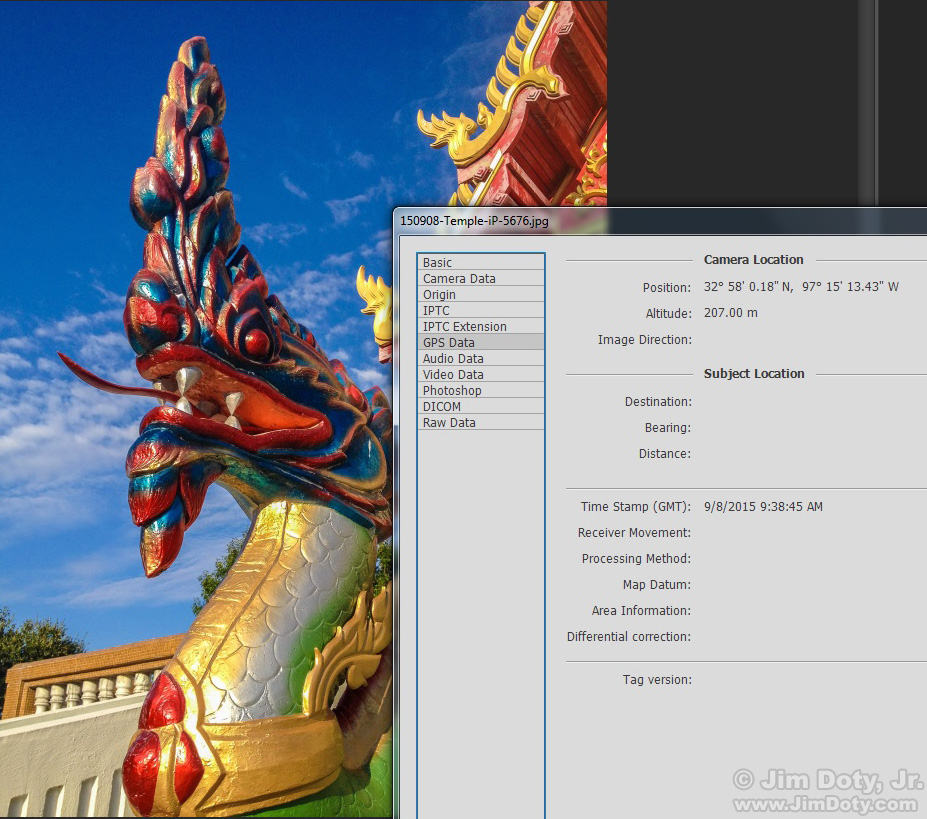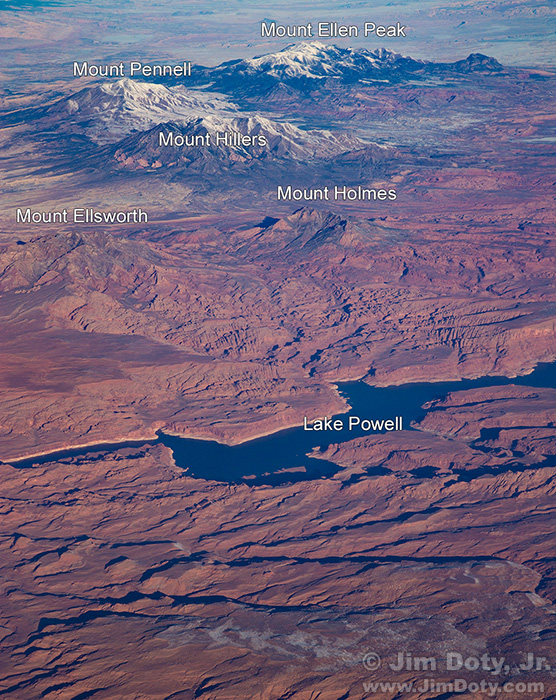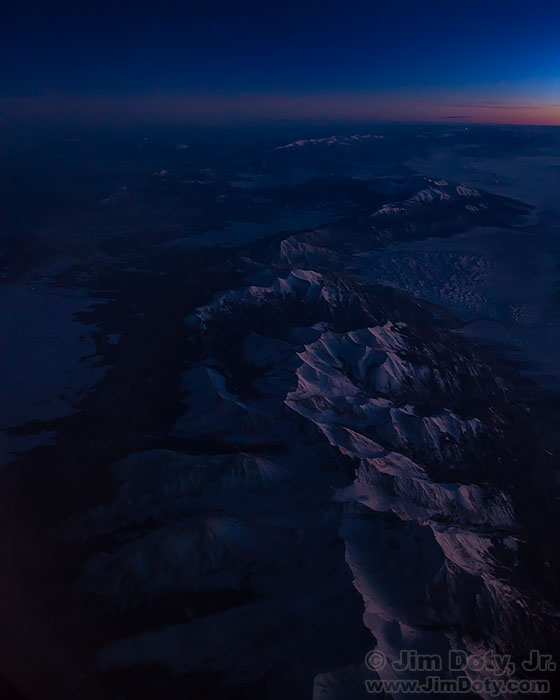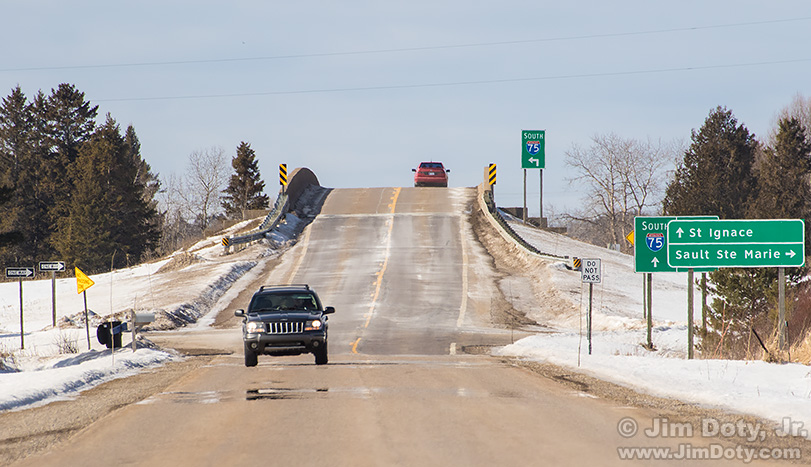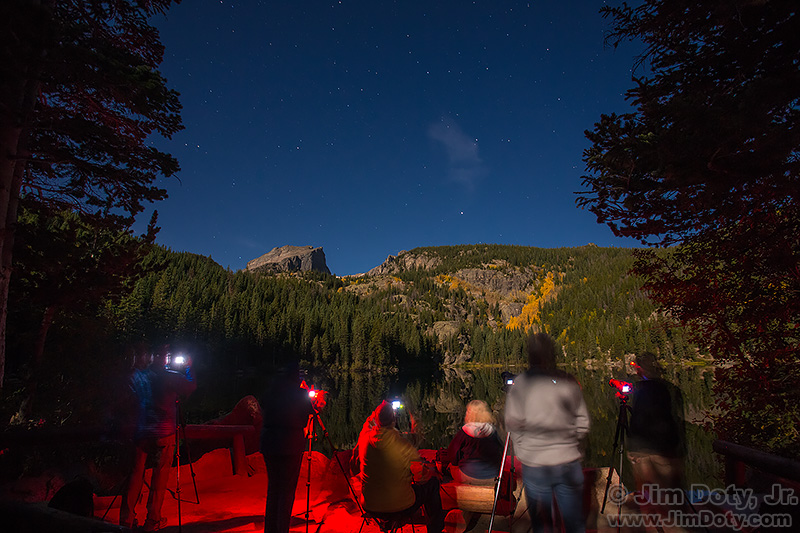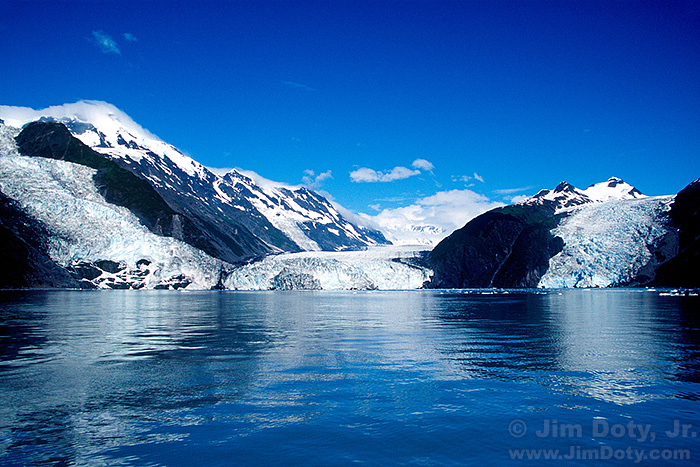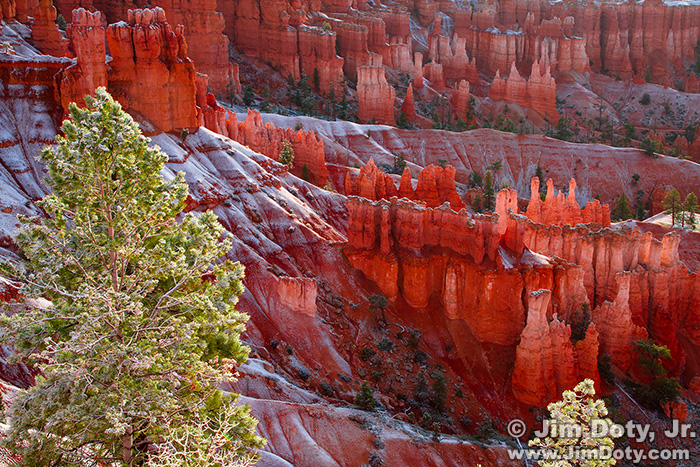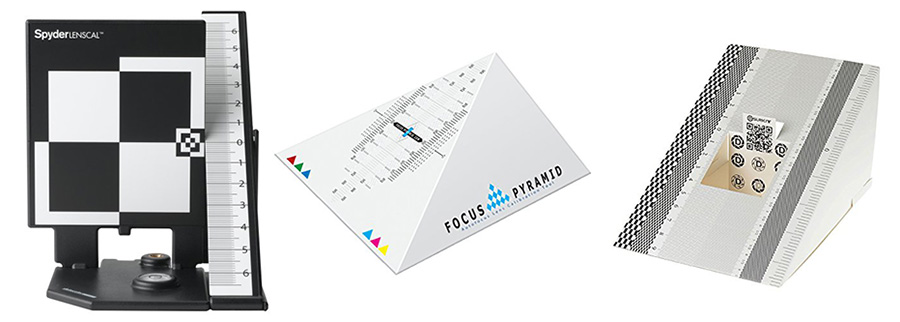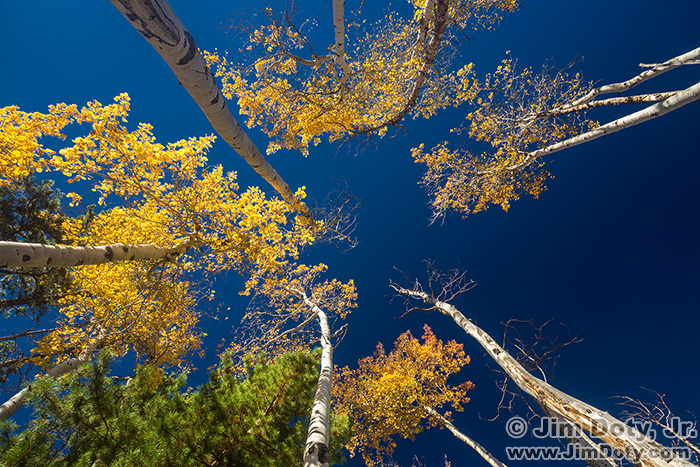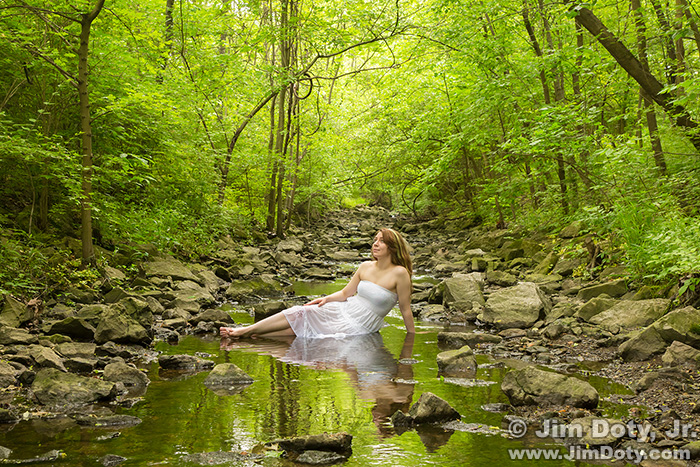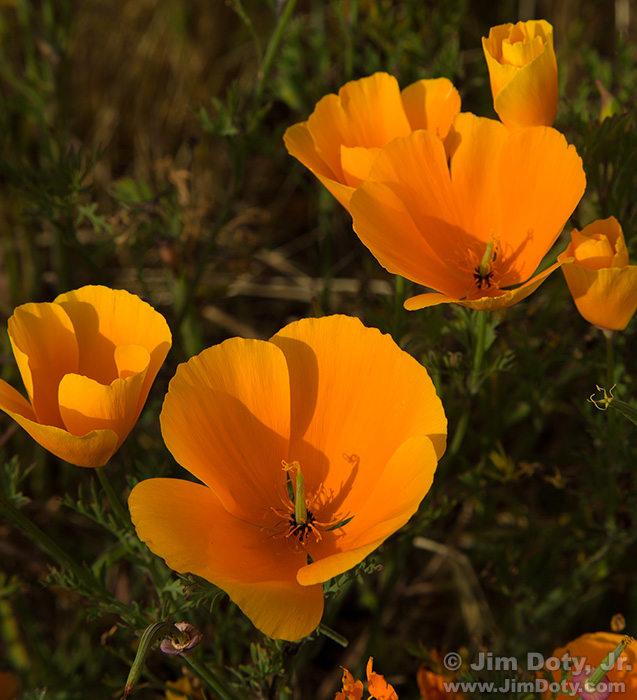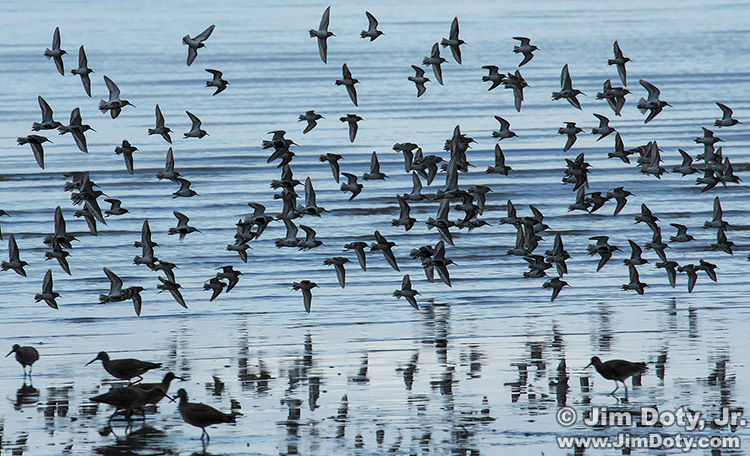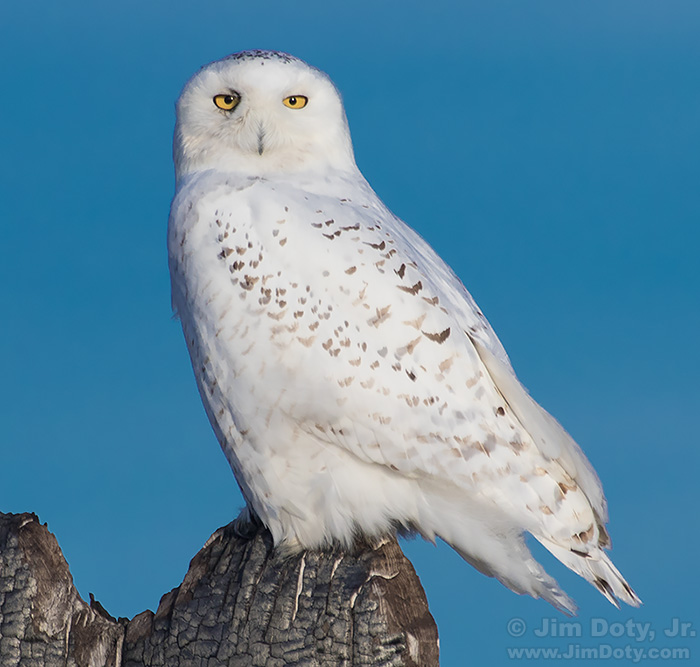If I am using flash for an environmental portrait, I usually prefer having the flash off of the camera. In this portrait of Warren Stevens (program director and mid-day air personality at Magic 106.3 FM in Columbus), the flash is above Warren and to his right, providing a nice semi side-lit photograph. On camera flash is flat and even. Getting the flash off of the camera and moving it to the side provides more shape and texture to the subject.
Category Archives: Using Equipment
Photo Shoot: Using a Halo Softbox with a Yongnuo Radio Controlled Flash System
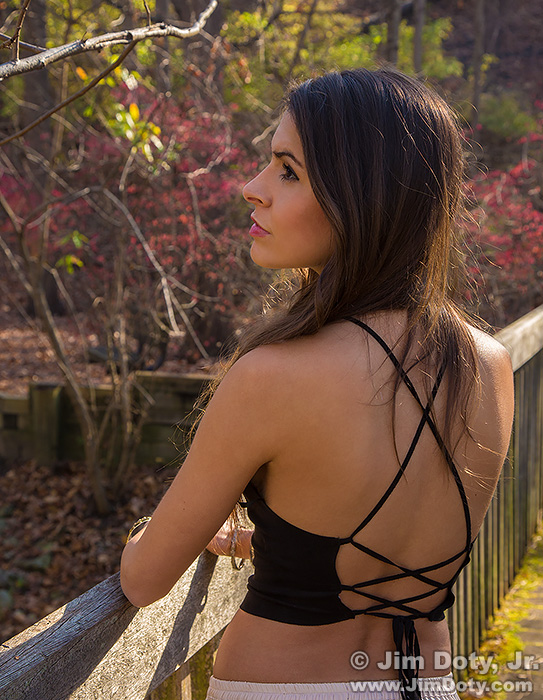
Kristina. Sunlight coming from the right. Halo softbox with Yongnuo speedlite providing light from the left.
After testing a Bob Davis 45 inch Halo Softbox and Yongnuo YN600EX-RT radio flash on my most available model (my dog), I needed to test it out on a real model. Opportunity called in the form of a message from Kristina, a professional model based in Los Angeles (and an absolute delight to work with). She would be in Ohio for Thanksgiving and she wanted to schedule a shoot. I was leaving town for Thanksgiving, but fortunately for us we had one day to shoot after she arrived and before I left.
How To Set Up a Halo Softbox or Umbrella with an Off-Camera Speedlite
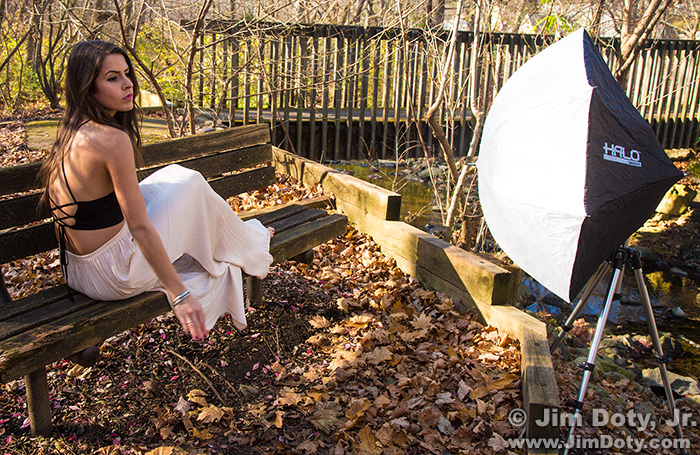
Halo Softbox set up on location and ready to use. The radio controlled flash and umbrella adapter are inside the softbox.
If you have never used an umbrella adapter to put a flash and umbrella or softbox on a tripod or light stand, the steps below will show you exactly what is involved. If you have already used an umbrella adapter, setting up a Halo softbox will be ridiculously simple for you. Skip to the Halo section below.
“How To” Series: Off-Camera Flash
Twelve articles (links below) to get you started with off-camera flash. The equipment you will need and how to use it.
Getting your flash off the camera opens up a whole new world of photographic possibilities. And the really good news: the equipment is way less expensive than it used to be. If you are ready to get started, I just finished writing (or re-writing) a series of articles on off-camera flash that covers the equipment you will need and shows you how to use it.
Giving Yourself Options: HDR Photography
In a single exposure your camera can’t capture everything your eyes see in high contrast situations with a wide range of tonalities. HDR photography gives you more options.
Getting Started with High Dynamic Range (HDR) Photography
Compared to the human eye, digital cameras have a very limited dynamic range. Your digital camera simply can’t capture the range of tones from light to dark that your eyes can see. That is why HDR photography has become so popular with so many photographers, and absolutely essential for some commercial photographers.
How To Photograph the Sun (and an Eclipse) with Lee and Other High Density Solar Filters
After posting the last article I am getting questions about how to photograph the sun with a solar filter. It is time to cover the basics.
Depth of Field and Hyperfocal Distance App for iPhones and iPads
My favorite depth of field app for the iPhone and iPad is the “Simple DoF Calculator” by Dennis van den Berg. It is fast, accurate, and simple to use. Best of all – you can set the Circle of Confusion (CoC) to the value of your choosing. In this screen capture of my iPhone the app is marked with a red square.
GPS Variations in Google Earth’s Timed Satellite Images
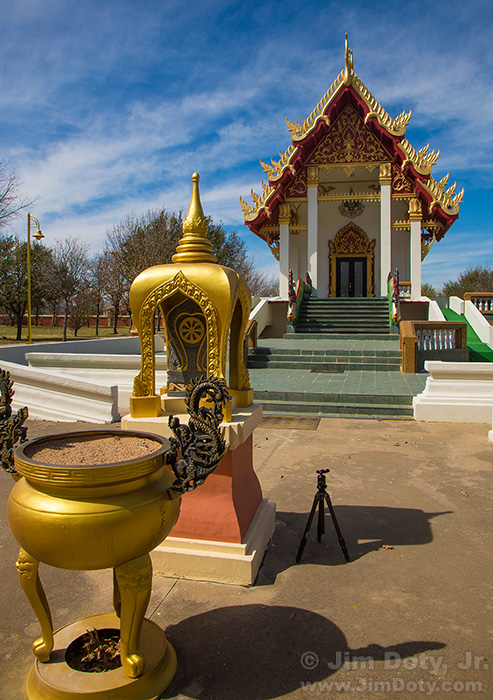
The tripod is at the camera location for the four camera GPS test in the previous article. Buddhist Temple, Keller Texas.
Over a period of time Google Earth records multiple satellite images of the same area. You can cycle through those images. You would think the same identical GPS coordinates would show up on the same location in the images as you go back through time, but that is not the case.
Testing the GPS Accuracy of Four Cameras
I was taking pictures at the Buddhist Temple in Keller Texas (one of my favorite photo locations when I am in Keller) when it occurred to me I had four GPS equipped cameras with me. So it was time to do my first test of four GPS enabled cameras in the same location.
Wild Turkey: DSLR vs iPhone
Every once in a while I am asked if smartphones are replacing DSLRs. The answer varies with the photographer but for many photographers the answer is no. This pair of photos says it all. There are still some things smartphones just can’t do, at least not right now.
“How To” Series: Using GPS in Photography
The GPS system is increasingly important to photography. It will help you figure out where you took some of your more obscure photos and help you caption your photos. More and more photo editors want GPS information for the photos they publish. A GPS communicator could save your life. This series will help you learn the ins and outs of GPS, plus keep you and your family safe.
Originally posted Jan. 29, 2016. Updated and re-posted Feb. 11, 2017. Updated March 18, 2024.
Geotagging Aerial Photos: The Joys and Frustrations of Using GPS on an Airplane
When I am taking pictures from an airplane I am curious where I am and what I am seeing down below. Sometimes it is obvious, like the Grand Canyon, and sometimes it isn’t. GPS on a plane should help a lot. At least that’s the theory.
How to Photograph Comet 45P
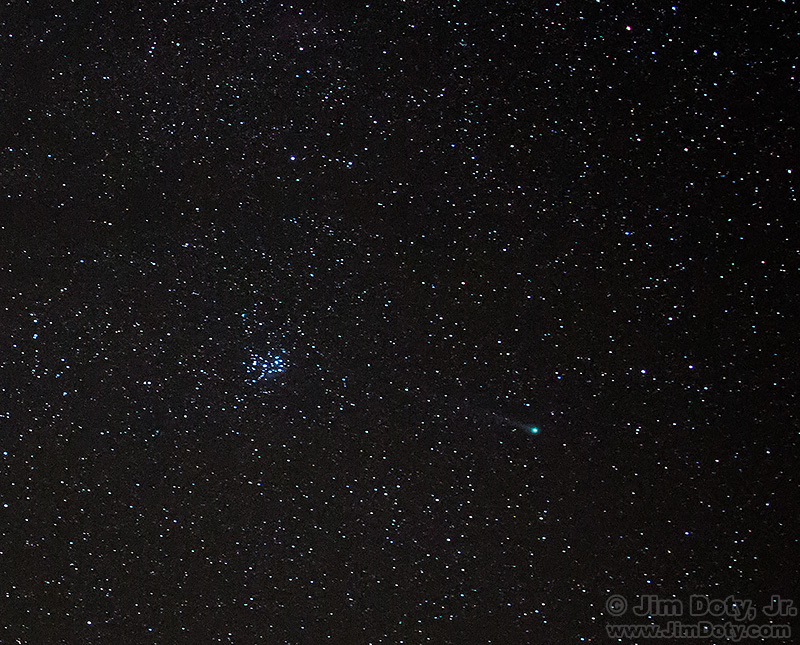
Comet Lovejoy. January 19, 2015. Cropped from a photo taken with a 24mm lens. Click for a larger version.
If you aren’t used to photographing faint objects in the night sky, this will be a challenge, but I suggest you try anyway. You have nothing to lose and a photo to gain.
Originally posted Feb. 9, 2017. Revised and expanded Feb. 10, 2017.
How to Photograph from a Plane at Dusk (The Sangre de Cristo Mountains)
Everything but time was in my favor. I was able to grab a good window seat (well ahead of the engines) with a clean, un-crazed window on the correct (right) side of the plane to photograph the Sange de Cristo Mountains.
Comparing the GPS Accuracy of Three Cameras
I was on S. Hantz Road east of Rudyard, Michigan looking for Snowy Owls. According to eBird there had been several recent Snowy Owl sightings in the area, but no owl was to be found the day I was there. Another photographer I met didn’t have any luck either. I had three GPS enabled cameras with me, counting my phone, so with no owls in sight I decided to compare the accuracy of the GPS units.
Originally posted Jan. 31, 2017. Revised and expanded Feb. 19, 2017.
How To Focus Your Lens at Infinity for Night Photography
The most important and difficult step in night photography is to focus your lens at infinity. If you have tried to focus on the stars at night you have already learned that it is an impossible task for the autofocus system and just about impossible for you to do manually. You just can’t see clearly enough through the viewfinder in the dark of night to manually focus on the stars. Fortunately, there are some ways to get the job done.
Originally posted Jan. 8, 2017. Revised and expanded Feb. 10, 2017.
How To Work With A Model When The Windchill is 4°
You would think a windchill of 4° Fahrenheit (-16°C) would be too cold for a photo shoot, but not with some models. We booked this January shoot weeks in advance so we knew it would be cold, but we had no idea how cold until the day arrived. Here’s the story behind this image and how to work with a model when it is so cold.
Testing Your Camera’s Snow Exposure Latitude
The “snow exposure latitude” for every camera is different. You won’t find it in your camera’s manual but it is easy to determine with a do-it-yourself test. Why does it matter? If you don’t know the snow exposure latitude for your camera and how to apply apply it to your images, the color and quality of your winter photos will suffer.
How To Protect Your Camera Gear in the Cold and Snow
Cold and snow can cause a lot of damage to your camera gear. Something as simple as shooting outside and taking your camera inside your house or car can cause hidden damage that won’t show up until days or weeks later. The simple steps in this article could save you hundreds of dollars in repair bills.
Why I Shoot Raw: Two Minute Tips with David Bergman
Get Sharper Images By Using The Best Lens Calibration Tools
A lot of photographers have discovered their almost sharp lens was actually a very sharp lens once they tweaked the micro-adjustment settings. You will get sharper images if you adjust the settings for your specific camera and lens combinations. You do this using the micro-adjustment settings in the camera menu along with a lens calibration tool which you can buy or make yourself.
Article posted Dec. 28, 2016. Updated Nov. 21, 2017.
Eliminating Sun Flare
There are times when you shoot in the direction of the sun that direct rays from the sun enter your lens even though the sun isn’t in the photo. Whenever this happens you have the possibility of sun flare. The sunlight bouncing around inside your lens can create ghost shapes, add a light haze to the image, and rob the photo of color.
POTD: Reflections
My concept was to photograph a young woman in a stream with reflections of her and the trees in the ripples of the water. I had just the right stream in mind and at this time of year there was just enough water. This isn’t the pose I originally had in mind. More about that later.
POTD: California Poppies
It is poppy season in the San Francisco Bay Area.
Weather and Wildlife: Shorebirds in San Francisco Bay
Weather can have a lot to do with finding wildlife. After several days of rain and very few shorebirds to be seen, the rain stopped, the weather began to clear and the San Francisco Bay exploded with shorebirds.
How To Get Critical Focus in “Live View” Mode with a Magnified Image
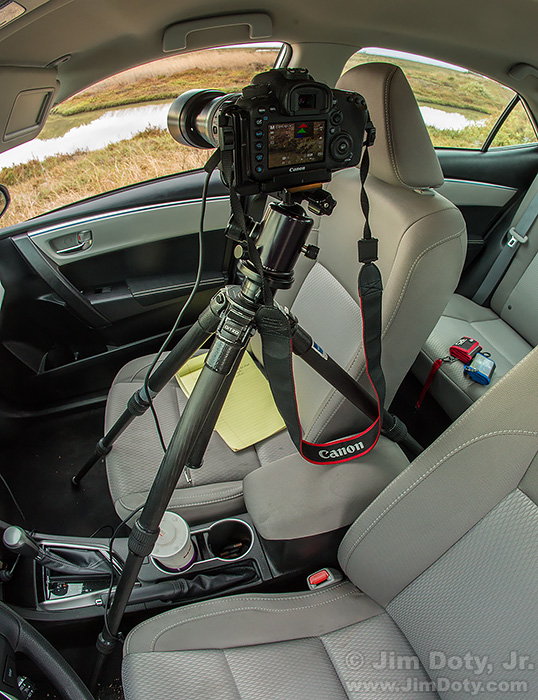
Tripod mounted camera in live view mode. The image is visible on the LCD along with the RGB histogram.
“Live View” mode is a huge boon to digital photographers and magnified focus is one of the reasons why. Focusing this way is more accurate than the camera’s autofocus modes, at least with non-moving subjects, and you will have sharper images. Landscape photography is the usual time to use this technique but sometimes it works for wildlife.
First Night: Testing an iOptron SkyTracker, Part Two
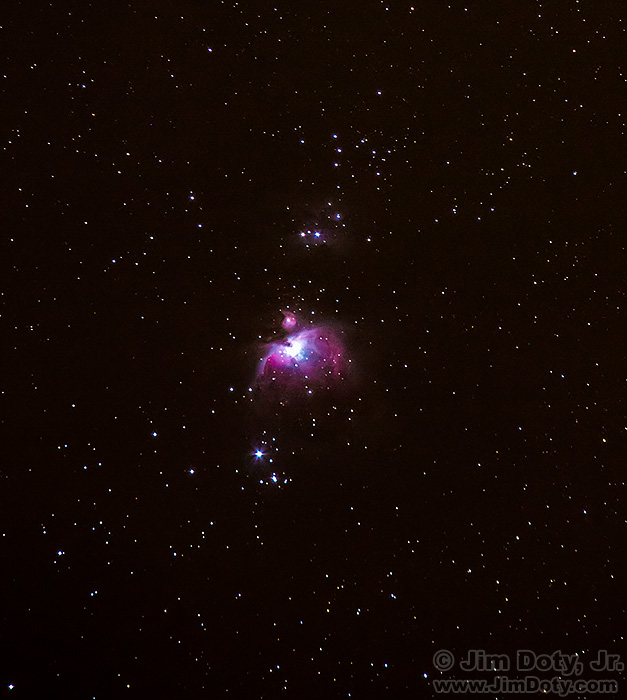
Orion Nebula and Nebula NGC 1977. Three minute exposure with a 300mm lens and camera mounted on an iOptron SkyTracker. This is cropped from a larger image.
After a one minute exposure using the iOptron SkyTracker (see the photo in part one), I tried a 3 minute exposure with the same 300mm lens to create the image above (which is cropped from a larger image which you can see below). The Orion Nebula (M42 and M43) shows up quite well and you can even see some of the nebulosity of NGC 1977 just above the Orion Nebula around the 5th magnitude stars Orionis 42 and 45. The iOptron StarTracker is an impressive piece of equipment.
Posted March 17, 2016. Updated Dec. 5, 2017
iOptron Polar Scope Alignment with a Simple Chart
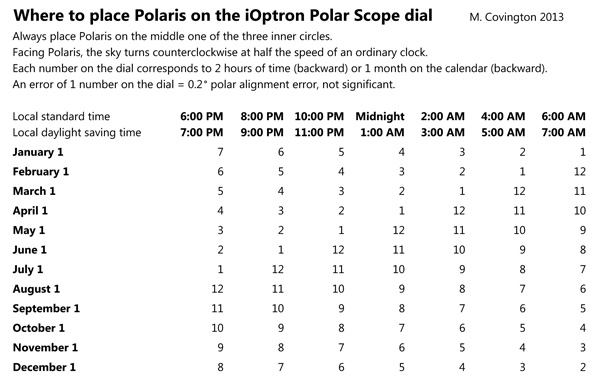 The iOptron SkyTracker has become a very popular way to do long exposures of the night sky for people on a budget who want to use their own camera and lenses. If you have an iOptron Polar Scope and you want to align it with Polaris without using a smart phone app, Michael Covington has created two charts that will make that simple.
The iOptron SkyTracker has become a very popular way to do long exposures of the night sky for people on a budget who want to use their own camera and lenses. If you have an iOptron Polar Scope and you want to align it with Polaris without using a smart phone app, Michael Covington has created two charts that will make that simple.
A Snowy Owl Photo Expedition
What is a Snowy Owl expedition really like? This article is your chance to find out. Join me for a two day photo safari! I give you tips and photo suggestions along the way, and you get to see how I prepare, plan, and adapt on a photo trip.

